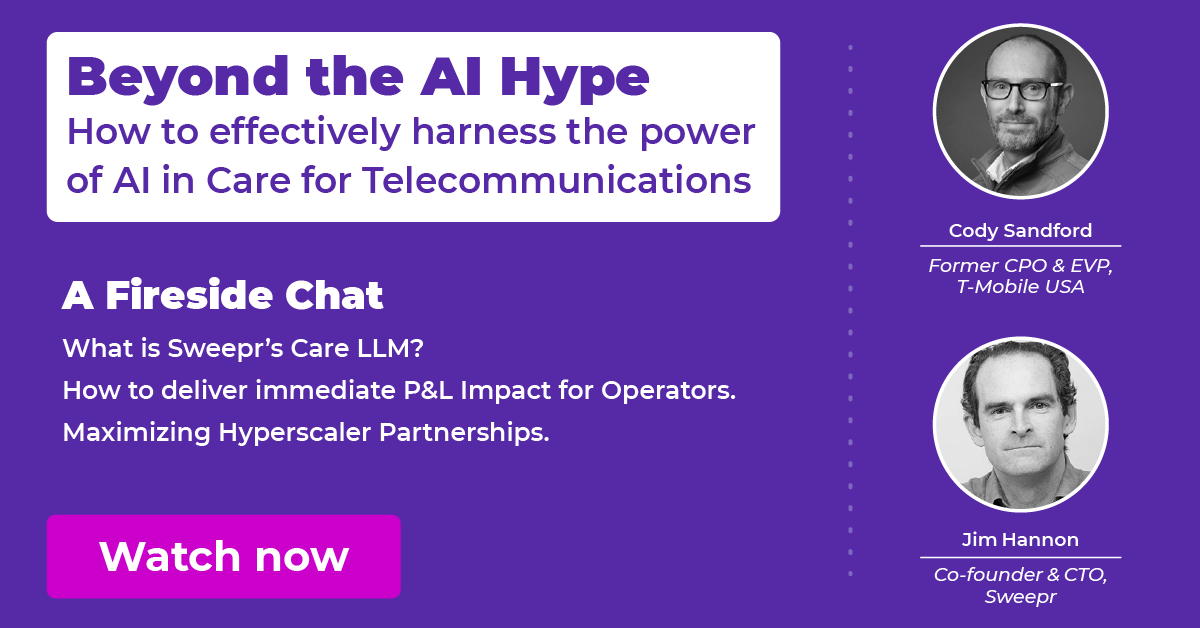As consumers, we expect more from communications service providers now than ever before. From the moment we wake up, we are bombarded with multiple types of communication from numerous brands across all digital channels – and so it takes something special for a brand or service provider to cut through this ‘noise’, understand what we are looking for, best support our needs, deliver that solution, and ensure that we stay long-term brand advocates.
To achieve this, providers are starting to look to behavioural science for interventions that can attract, interest and continue to engage their customer base. These brand strategies draw on the science of nudging, which involves using specific cues and tapping into cognitive biases to subtly influence behaviour – invaluable in driving consumer action. The underlying assumption of nudge theory is that we make decisions in ways that aren’t always rational. For example, it doesn’t make sense to wait until a new year to set your health goals (fresh start effect) or to always choose the middle-priced bottle of wine on the menu (price anchoring), yet we do it anyway.
Importantly, these ‘irrational’ ways of making decisions often follow patterns and trends that we can learn from and apply to mass markets to shape future consumer behaviour and digital engagement strategies.
As our understanding of behavioural science evolves – as well as our access to new digital tools and technologies – we can begin to shift our focus. Now, the move is to a more tailored approach to personalisation using interventions aimed at the individual level.
Different types of people; different types of nudges
Nudging consumer behaviour moves away from the traditional ‘one-size-fits-all’ with more personalised and nuanced tactics to better match the recipient. This matchmaking is both in terms of delivery type and delivery platform. Think about how you’d explain a technical phrase in your industry to a colleague. Then that same concept to a friend who doesn’t know your industry well. The differences will be across style, tone, complexity, and vocabulary even. We adjust how we talk and what we say, depending on who we’re speaking to. The context of their lifestyle and perhaps even the number of times you’ve had a similar conversation with them also play a role. This targeted approach means our message is better delivered, better understood, context led and – most importantly for a provider – better acted upon.
The success of a nudge depends on the person being nudged, and personality plays a significant role here. For example, more risk-averse people respond to messaging that highlights the herd, that is, using the behavioural principle of social proofing, which involves making a decision to fit in with the crowd. Similarly, people categorised in personality terms as ‘agreeable’ prefer informal language that is conversational and light-hearted. Providers who deliver in this way ultimately have more success in converting these types of customers.
The knock-on benefit of personalisation to a business’s bottom line is significant. In one study, researchers found that online personalised care messaging doubled conversion rates. In another, the role of personalisation to promote better online security through setting passwords was tested. The results were clear: those who received personalised password-setting journeys had considerably better password outcomes – that were 10x harder to crack. Shared value for both the consumer and the company.
Insights and action from personalised analytics
With the growth of several sophisticated analytics tools, every provider is now able to get access to some level of data. The question is how well they are able to harness the opportunities that their data offers and what the human – psychological and behavioural – implications are.
It is not enough to simply know that people and their circumstances differ. We need to analyse these differences and better understand how these differences result in different decision-making processes. Data points including ongoing enthusiasm for engaging digitally, historical information about how they have engaged before, aptitude for self-service and their communication channel preferences (email, post, phone call, in-app, etc.) are all relevant contextual cues that help shape how personalised nudges can best be used.
The more a business is able to identify and tailor content and decisioning pathways to its customer base, the better. This is especially effective when done across variables such as channel preference, family size/structures and contact frequency in addition to the more usual demographic information. As a result, customers can be served journeys and interactions best suited to their needs. This means offering them informed choices about how to use a provider’s products, upsell opportunities and ultimately saving on business costs through better engagement and conversion rates. Plus, less of a burden is then placed on support channels. Ultimately, shifting the client-customer relationship to one that is proactive as opposed to merely reactive in a hyperpersonalised way.
By putting psychology into technology, we can achieve the perfect balance of data-driven consumer insights. This approach combines empathetic human intuition with multiple data points that help guide a brand to its consumers’ desired goals.
The future of business success
Without question, future business success is rooted in the right blend of data and human touch – combining quantitative, qualitative and behavioural insights to deliver brand value that a consumer not only needs but now expects.
Book a tour to discover how Sweepr’s 7 Principles of Personalisation help CSPs hyperpersonalise digital customer care experiences.

